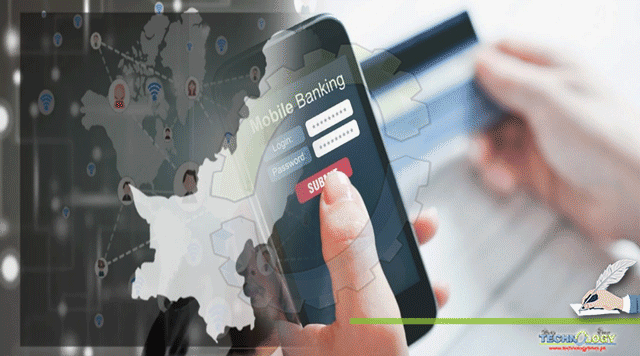As the world continues to tackle one of the biggest pandemics in modern history, countries are opening up to the reality of a ‘new normal’ once things actually settle down.Pakistan is among the few countries where the impact has been slightly less damaging than expected but still, the health and economy of the country in particular have made most individuals and businesses realize the need to accept significant changes in their lifestyles.

By Ammar Muzaffar
The most meaningful is mobile banking`s share in the total e-banking value surged to 4.75pc in July-September from just 1.87pc in the corresponding period of last year. This marked a fast convergence with internet banking whose shares in the respective periods were 5.68pc and 3.68pc.
This was accompanied by an addition of 2.61 million mobile and 875,284 internet banking users in July-September over the same quarter of 2019-20.
The incorporation of technology is one aspect that has taken center stage in light of the COVID-19 outbreak. From education to banking, customers have become more accepting towards digital platforms. Pakistan is among the countries where the landscape for online service delivery has been relatively underdeveloped and although the current administration launched massive steps like the Digital Pakistan Initiative and a variety of other campaigns to revamp the respective infrastructure in the country, acceptance at the customer level is still low.However, a range of collective efforts from various stakeholders and a push provided by the current crisis is beginning to bear fruit. Mobile banking platforms in Pakistan reported between 17% to 34% rise in usage after lockdowns were initiated across the country in order to limit the spread of COVID-19.The total number of mobile accounts in Pakistan currently stands at 46 million while the tally of active accounts is 25 million.
According to recent statistics presented by the Ministry of IT, export remittances grew 23.71% during July to September 2020 compared to last year, “Almost $1.2 billion was received through IT and IT-enabled services’ exports during fiscal year 2019-20,”
Financial institutions have had a crucial role in creating avenues for customers to reduce their dependence on cash and move towards digital transactions. Most major banks have revamped their digital banking programs. The likes of BankIslami, HBL Konnect, Easypaisa and Jazz cash have recently launched updated versions of their mobile apps which address customer concerns about these platforms not being user friendly or aesthetic.
The new BankIslami app for instance, now offers consolidated dashboard for viewing all active accounts along with their status. The program is secured and accessible through biometric or facial recognition. Major functions like bill payments and transfers require just a few taps.
Moreover, it offers additional security through device tagging and a simplified user experience for enabling SMS alerts as well as card management for customers to stay updated with the status of their banking products.
Pakistan has a high smartphone and broadband coverage penetration which provides a strong foundation for customers to accept digital banking services. Account opening in banks is also undergoing a process of simplification to allow online registration. The same goes for mobile money management solutions which offer direct registration within the app.
The development of Alternative Delivery Channels is becoming an imperative factor in creation of a sustainable ecosystem for digital payments. With apps now becoming simpler to use and account opening being less of a hassle, the financial inclusion in the country is bound to rise which will be a healthy sign both for the economy as well as international investments.
Recently issued report from the State Bank of Pakistan (SBP). It`s the Payments Systems Review for July-September. It reveals that the total payments transactions grew by 23 per cent year-on-year in volume and 8pc in value in the first quarter of 2020-21.
Much of the gains by mobile banking were made in the April-June quarter, lending some weight to the hypothesis that Covid-19 triggered a shift towards digitisation in Pakistan. And the improvement was across the board as each of its four components more than doubled: intrabank fund transfers surged 162pc year-on-year to Rs320.2 billion in July-September, interbank 264pc to Rs426.9bn, utility bills 214pc to Rs34.2bn and miscellaneous payments 206pc to Rs127.5bn.
On the flip side, the share of e-commerce in overall e-banking hasn`t posted any worthy improvement. It was just 0.06pc in the latest period as opposed to 0.02pc in the first quarter of 2016-17an increase of only four basis points in an equal number of years. This is despite a big jump in the supply side as proxied by the number of merchants registered with banks. Their number soared by 53.5pc to 2,164 in the period under review, from 1,410 a year ago.
Another noticeable change is the growing share of debit cards in point-of-sale transactions compared to credit, which has receded some ground.
The former rose to occupy 54.18pc of the total POS value in the first quarter of the current fiscal year from 48.67pc in the corresponding period last year while the latter fell to 45.2pc, from 50.82pc.
Pakistan is witnessing a wave of digitization especially among the financial sector. It is not just about ecommerce, mobile banking and preference for POS transactions but a changed orientation towards other platforms like budgeting apps as well. Hysab Kytab is one application that is allowing users to streamline daily as well as monthly budgets for both personal as well as professional activities. This creates a combination of platforms that enable greater convenience and financial flexibility all at users fingertips.
Budgeting apps tie in effectively with the overall digital banking landscape of the country enabling a significant shift among the masses while creating more opportunities for enhancing financial inclusion at the same time.